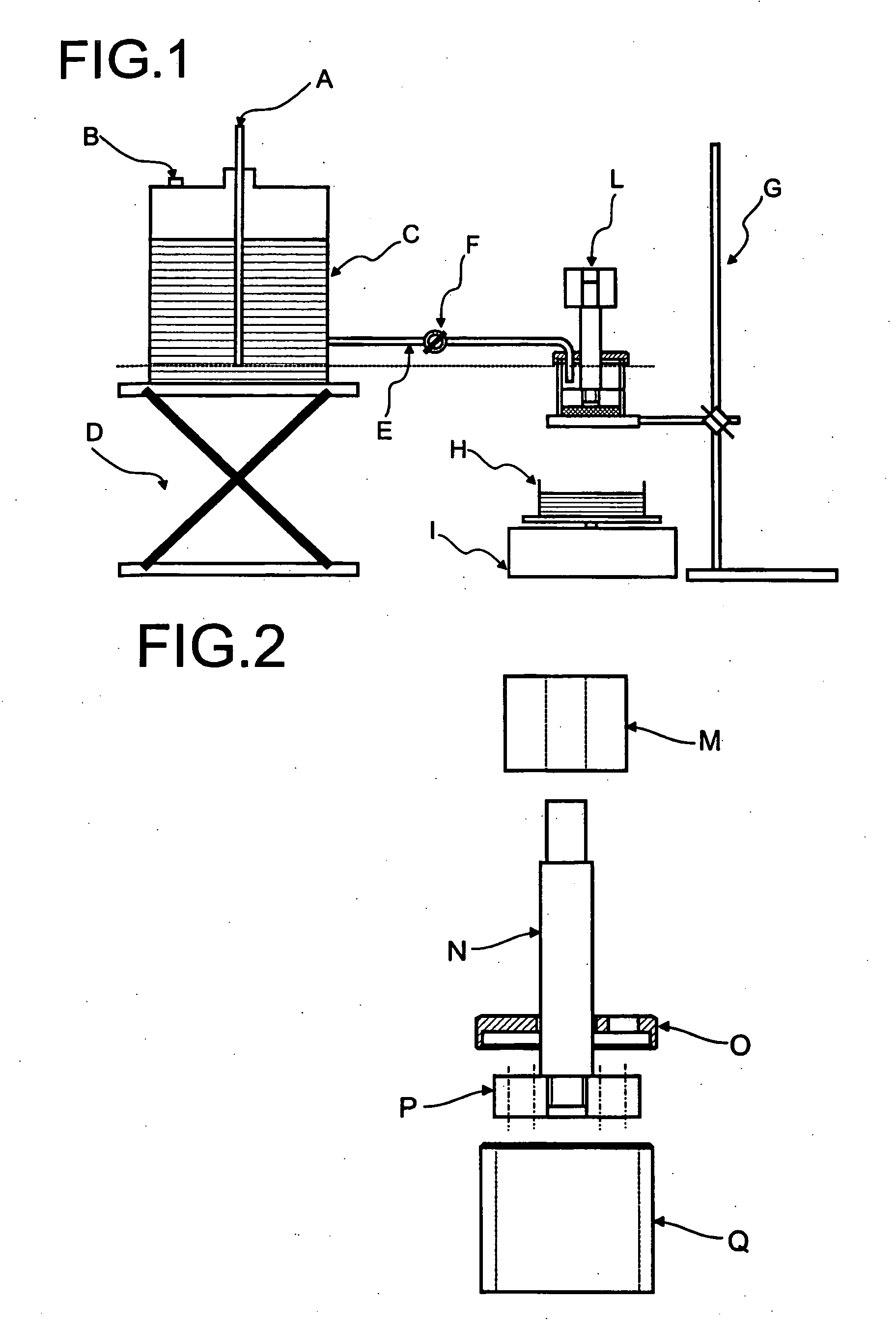Absorbent structure with improved water-absorbing material
- Summary
- Abstract
- Description
- Claims
- Application Information
AI Technical Summary
Benefits of technology
Problems solved by technology
Method used
Image
Examples
example 1
Coating of ASAP 510 Z Commercial Product with Permax 120
[0246] The 800-850 μm fraction was sieved out of the commercially available product ASAP 510 Z (BASF AG) having the following properties and was then coated with Permax 120 according to the present invention.
[0247] ASAP 510 Z (properties before sieving):
[0248] CRC=29.0 g / g
[0249] AUL 0.7 psi=24.5 g / g
[0250] SFC=50×10−7 [cm3s / g]
[0251] ASAP 510 Z (properties of the 800-850 μm fraction only):
[0252] CS-CRC=32.5 g / g
[0253] CS-AUL 0.7 psi=26.4 g / g
[0254] CS-SFC=66×10−7 [cm3s / g]
[0255] A Wurster laboratory coater was used, the amount of absorbent polymer (ASAP 510 Z, 800-850 μm in this case) used was 500 g, the Wurster tube was 50 mm in diameter and 150 mm in length, the gap width (distance from base plate) was 15 mm, the Wurster apparatus was conical with a lower diameter of 150 mm expanding to an upper diameter of 300 mm, the carrier gas used was nitrogen having a temperature of 24° C., the gas speed was 3.1 m / s in the Wurster tu...
example 2
Coating of ASAP 510 Z Commercial Product with Permax 200
[0259] The 800-850 μm fraction was sieved out of the commercially available product ASAP 510 Z (BASF AG) having the following properties and was then coated with Permax 200 according to the present invention.
[0260] ASAP 510 Z (properties before sieving) as reported in Example 1.
[0261] A Wurster laboratory coater was used as in Example 1, the amount of absorbent polymer (ASAP 510 Z, 800-850 μm in this case) used was 1000 g, the Wurster tube was 50 mm in diameter and 150 mm in length, the gap width (distance from base plate) was 15 mm, the Wurster apparatus was conical with a lower diameter of 150 mm expanding to an upper diameter of 300 mm, the carrier gas used was nitrogen having a temperature of 24° C., the gas speed was 2.0 m / s in the Wurster tube and 0.5 m / s in the surrounding annular space.
[0262] The polymer dispersion was atomized using a nitrogen-driven two-material nozzle, opening diameter 1.2 mm, the nitrogen temper...
example 3
Use of a Deagglomerating Aid (Calcium Phosphate) Before Heat Treatment
[0265] The run of Example 2 with 10% of Permax 200 was repeated, however, the polymer coated with the dispersion was transferred to a laboratory tumble mixer and 1.0% by weight of tricalcium phosphate type C13-09 (from Budenheim, Mainz) based on polymer was added and mixed dry with the coated polymer for about 10 minutes. Thereafter the polymer was transferred into a laboratory fluidized bed dryer (diameter about 70 mm) preheated to 150° C. and, following a residence time of 30 minutes, the following properties were measured:
CS-CRC=22.2 g / g
CS-AUL=22.3 g / g
CS-SFC=1483×10−7[cm3s / g]
[0266] There was no clumping whatsoever during the heat treatment in the fluidized bed, so that the fluidized bed remained very stable and as was demonstrated by subsequent sieving through a 1000 μm sieve.
PUM
| Property | Measurement | Unit |
|---|---|---|
| Temperature | aaaaa | aaaaa |
| Temperature | aaaaa | aaaaa |
| Fraction | aaaaa | aaaaa |
Abstract
Description
Claims
Application Information
 Login to View More
Login to View More - R&D
- Intellectual Property
- Life Sciences
- Materials
- Tech Scout
- Unparalleled Data Quality
- Higher Quality Content
- 60% Fewer Hallucinations
Browse by: Latest US Patents, China's latest patents, Technical Efficacy Thesaurus, Application Domain, Technology Topic, Popular Technical Reports.
© 2025 PatSnap. All rights reserved.Legal|Privacy policy|Modern Slavery Act Transparency Statement|Sitemap|About US| Contact US: help@patsnap.com



